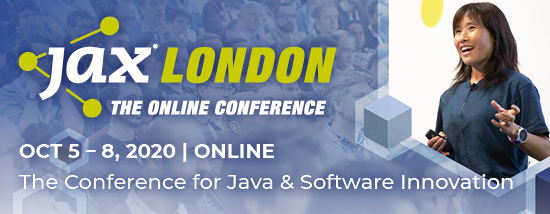JAXenter: Your latest release focuses on onboarding, observability, dashboarding and alerting, among other things. Why did OpsRamp choose to upgrade its platform in these areas, and what problems are they solving for your customers?
Ciaran Byrne: Research firm IDC predicts that by the end of 2021, 80% of global enterprises will “shift to cloud-based infrastructure twice as fast as before the pandemic.” Enterprise IT leaders are migrating to hybrid, multi-cloud, and cloud native infrastructure to support their organization’s digital transformation initiatives. OpsRamp’s Spring 2021 Releases delivers faster time-to-value for enterprise cloud migrations with:
- Onboarding. Enterprises can rapidly onboard their cloud infrastructure using OpsRamp’s hybrid cloud onboarding guide. The onboarding wizard drives real-time discovery of cloud resources across Amazon Web Services, Microsoft Azure, and Google Cloud Platform in a few simple steps. Cloud operations teams can streamline their discovery-to-first-metric process with automated monitoring insights for public cloud workloads.
- Hybrid Observability. Kubernetes administrators can now send their Prometheus metrics to OpsRamp for long-term storage and visualization. Organizations can track the performance of their microservices and K8s environments without having to manage their own Prometheus instance.
- Dashboards. Cloud operators can gain extended visibility into how their cloud infrastructure is performing with customizable dashboards. These dashboards are built on a flexible querying framework powered by Prometheus Query Language (PromQL) that lets IT teams access the metrics that matter to them. There are many visualization types available for each dashboard and each graph can be stylized to fit an organization’s needs.
- Alerting. IT teams can use OpsRamp’s alert definitions model to create a centralized repository of different metric-based alert conditions. This lets cloud infrastructure engineers streamline threshold settings and reduce time-to-first alert to help stay on top of IT outages.
SEE ALSO: 5 Challenges in Deploying Hybrid Cloud Environments
JAXenter: Your press release talks about how CloudOps teams are shackled by legacy IT operations tools that were never designed to handle the dynamic and ephemeral nature of public cloud infrastructure. What do you mean by that? What about legacy tools specifically impedes the ability of CloudOps teams to do their job, and how is the shift to cloud infrastructure elevating the need for companies to transition to modern monitoring systems?
Ciaran Byrne: Legacy IT operations tools from technology vendors such as BMC, CA/Broadcom, Micro Focus, and IBM were built to monitor and manage on-prem applications and infrastructure that had largely stable and predictable usage patterns.
The shift from monoliths to microservices and data center infrastructure to cloud and cloud native services requires modern platforms that can keep up with the volume, velocity, and variety of telemetry (metrics, logs, and traces) and events/alerts that modern apps and hybrid infrastructure generate.
Digital operations management platforms combine data, AI/ML, and process automation to deliver the right level of insights to keep mission-critical IT services up and running, offer proximate root cause analysis to address IT outages, and restore technology services proactively without human intervention.
JAXenter: There’s very little in your product update about AI but we know that AI has become a bigger part of IT Ops over the past 12-18 months. How important is AI to Ops these days, what role do you see it playing going forward, and what other emerging technologies do you think will become key for IT Ops pros going forward?
Ciaran Byrne: Given that human operators can no longer cope with the sheer volume of telemetry and events across legacy and modern workloads, IT teams will need to rely on a combination of machine learning and data science to prioritize IT issues and address real-time disruptions.
We’ve announced innovative AIOps capabilities in our Spring 2021 Release including enhancements to first-response policies, seasonality-based alerting, and automation workflows. Enterprise IT teams can use OpsRamp’s capabilities for AI/ML-powered event management and automated remediation for comprehensive incident analysis, collaborative troubleshooting, and service repair in a single platform.
The post “Enterprise IT leaders are migrating to hybrid, multi-cloud, & cloud native infrastructure” appeared first on JAXenter.
Source : JAXenter




















